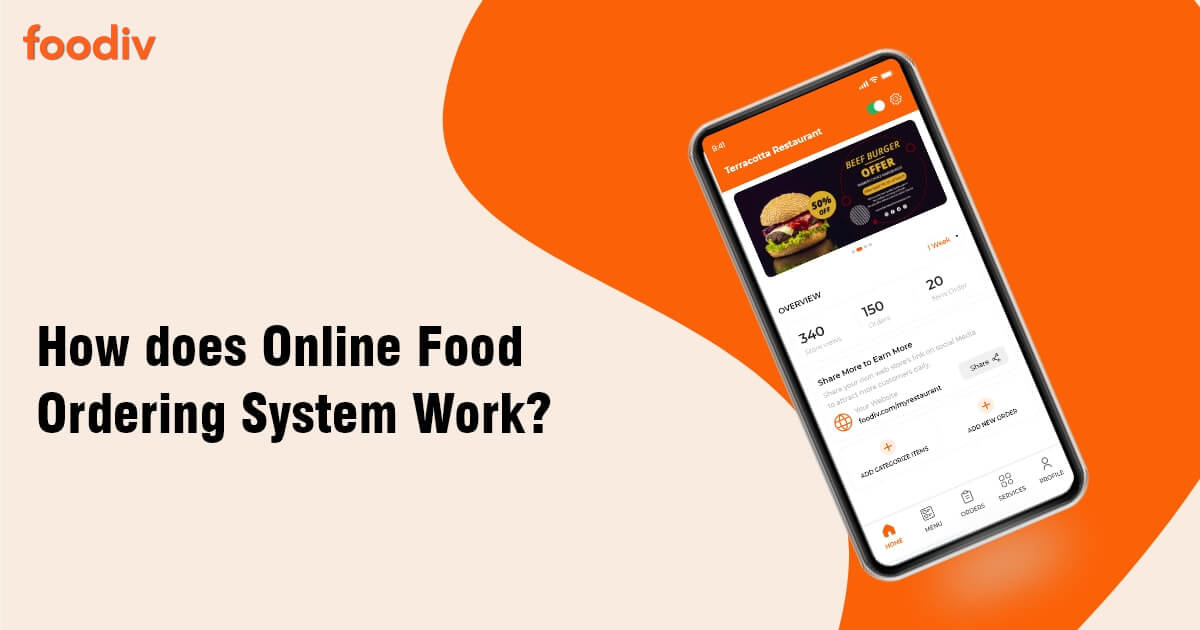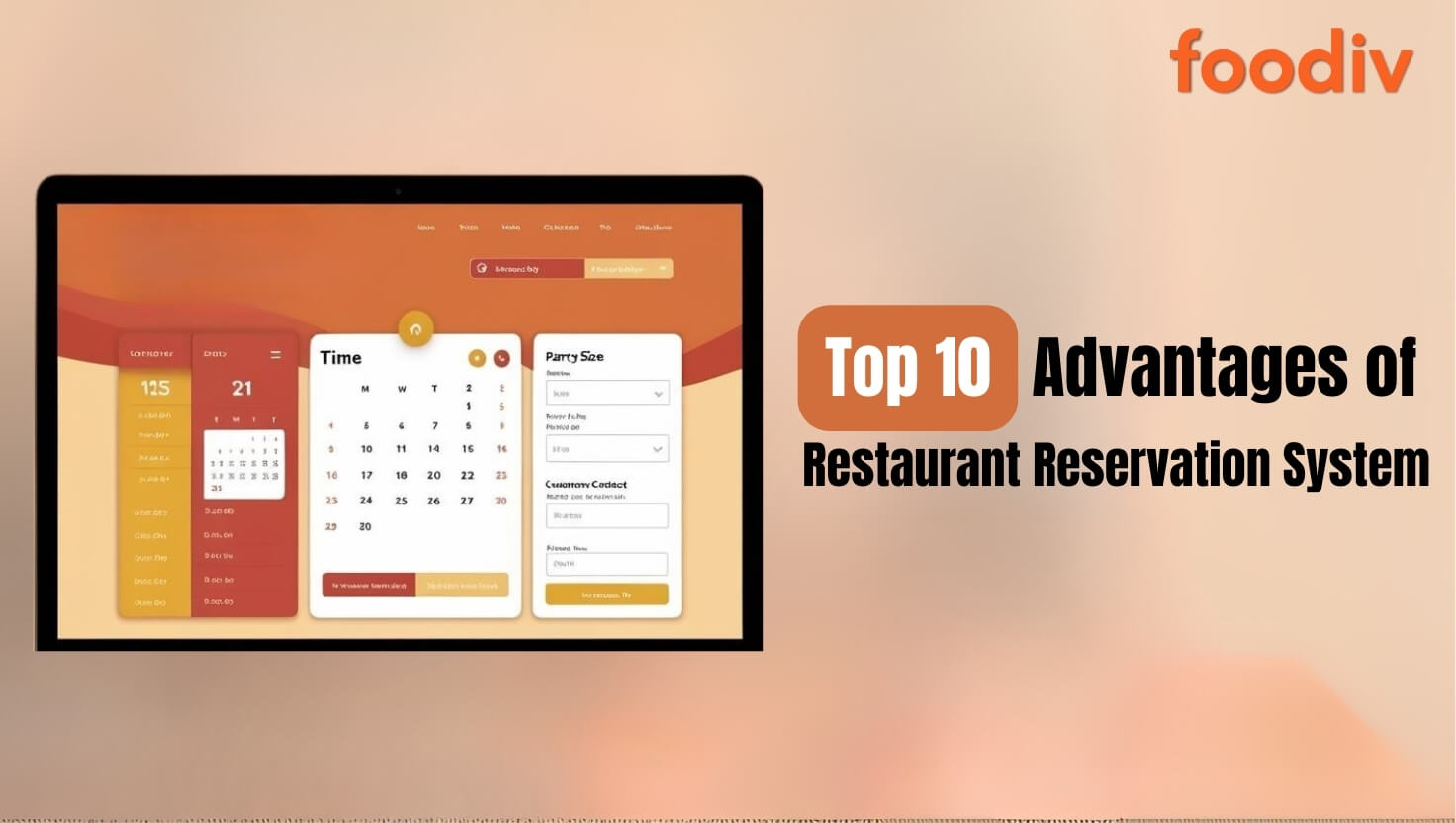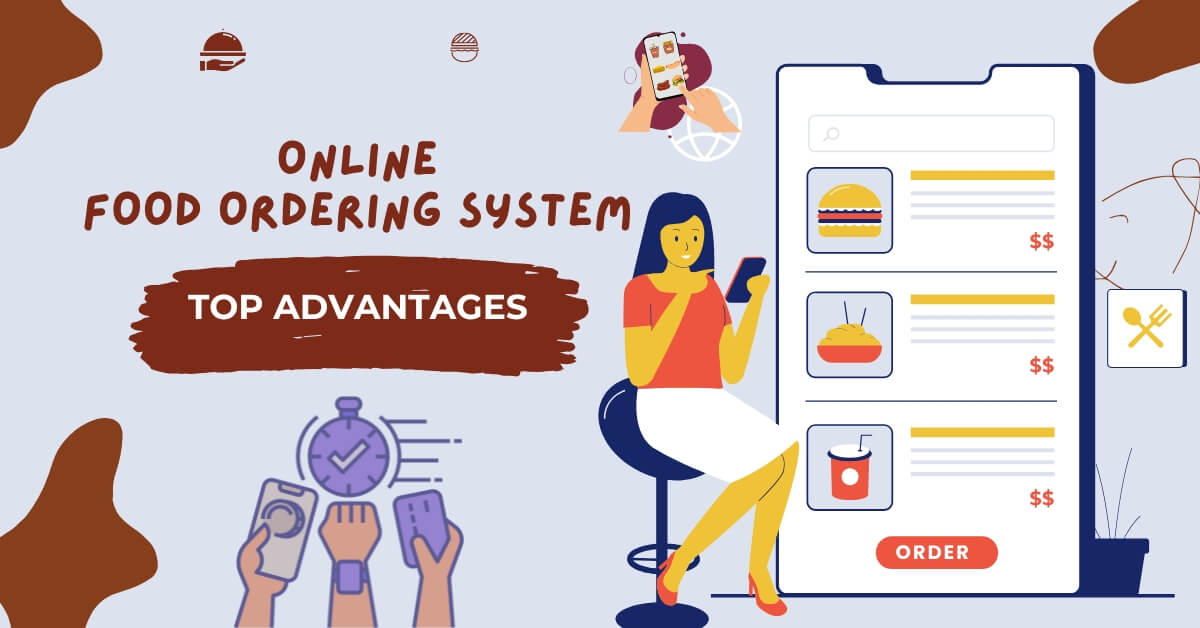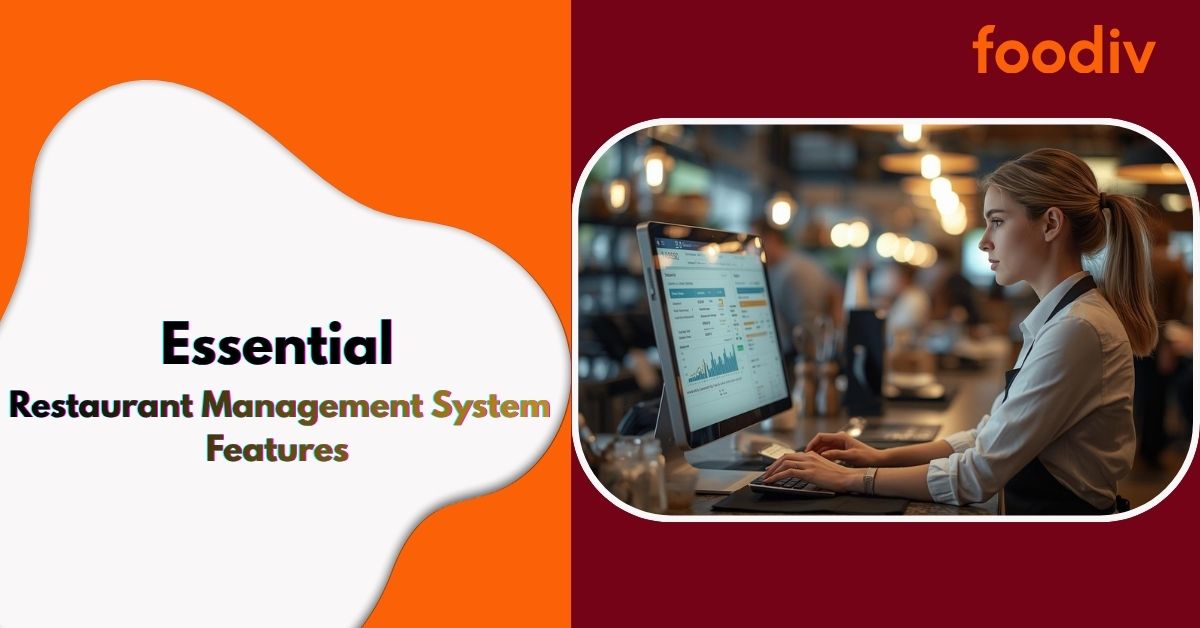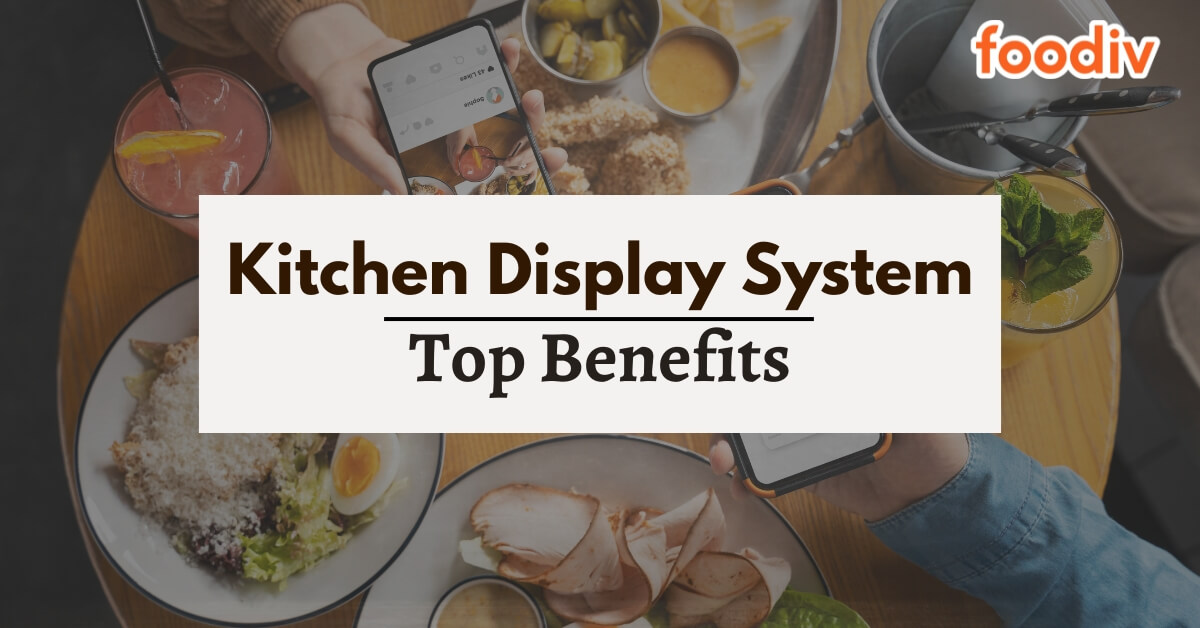
Kitchen display system is a digital solution designed to improve how restaurants handle orders and manage kitchen operations. In a busy kitchen environment, delays, miscommunication, and errors can affect food quality, service speed, and customer satisfaction. Many restaurants still rely on printed tickets or handwritten notes, which often lead to mistakes and confusion during peak hours.
A kitchen display system replaces traditional paper tickets with real-time digital order screens. These systems help organize tasks, reduce errors, and streamline the restaurant process across different kitchen stations. Whether operating a single-location eatery or managing multiple restaurants, adopting a kitchen display system supports efficiency, accuracy, and consistent service.
A recent study found that increasing repeat customer visits by only five percent can lead to a sales increase of up to twenty-five percent, emphasizing the connection between operational efficiency and customer loyalty.
As the food service industry becomes more competitive and technology-driven, choosing the right kitchen display system is becoming more important. It helps restaurant owners, managers, and entrepreneurs improve back-of-house operations and prepare for growth. This blog explains the key benefits of a kitchen display system and why it is now seen as an essential tool for modern restaurants.
What Is a Kitchen Display System?
A kitchen display system is a digital solution that replaces paper tickets with on-screen order information in restaurants. It connects directly with the restaurant’s point-of-sale system or online ordering platform, allowing real-time order updates to appear on kitchen monitors. This system ensures that kitchen staff receive accurate information about each order, including modifiers, preparation timing, and item grouping. It is often referred to as a restaurant kitchen display system, kitchen display software, or kitchen display application, depending on the format and setup.
The kitchen display system for restaurants helps improve communication and organization in the back of house. Orders are sent automatically to the relevant station, allowing chefs to focus on their specific tasks without confusion. Whether operating in a fast-casual outlet, a full-service restaurant, or a delivery-only kitchen, this technology ensures that every item is tracked, timed, and displayed properly. A well-structured kitchen display solution minimizes the need for verbal instructions and helps reduce the risk of delays or missed items during busy hours.
Many restaurants now use kitchen display apps or online kitchen display systems to manage orders across multiple locations. These systems are designed to handle high-volume operations and adapt to various service models. Whether installed on a touchscreen device or a mounted monitor, a kitchen display system offers greater visibility, faster response times, and consistent control over kitchen workflow. It plays a central role in supporting efficient, accurate, and scalable food service operations.
Why Restaurants Should Use a Kitchen Display System (KDS): Top Benefits
A kitchen display system offers a structured way to manage and fulfill food orders in a professional kitchen setting. Every detail in the system is designed to improve accuracy, increase speed, and support organized teamwork. Restaurants that rely on manual tickets or verbal instructions often face challenges such as delayed orders, miscommunication, and inconsistent service quality. These issues can lead to lower customer satisfaction, increased food waste, and reduced profitability.
Using a kitchen display system brings clarity and control to the entire kitchen process. Orders appear in real-time, instructions are visible to all necessary team members, and task assignments are clear. Each kitchen station receives only the information that applies to its function, allowing staff to stay focused and productive. The system is built to help restaurant teams perform consistently during every service period.
The following benefits explain why the kitchen display system has become an important tool for restaurant operators, food service professionals, and decision-makers in the hospitality industry. Each advantage supports daily performance and contributes to long-term business success.
Improved Order Accuracy
Order accuracy plays a central role in customer satisfaction and operational efficiency. A kitchen display system helps ensure that every order reaches the kitchen with complete, clear, and organized information. Unlike handwritten notes or printed tickets, digital displays remove the risk of misreading, overlooking special instructions, or missing entire items. Each order is presented with exact details, including customizations, dietary needs, and preparation notes, which allows staff to follow instructions with precision.
A well-structured kitchen display software reduces the likelihood of duplicate entries, incorrect items, and order delays caused by communication breakdowns. The system displays live updates if a change is made at the point of sale, ensuring that the kitchen staff always works with the most accurate version of the order. This level of clarity eliminates unnecessary questions between front-of-house and back-of-house staff and helps prevent costly re-preparation.
Restaurants that implement a kitchen display system experience fewer errors, less food waste, and improved consistency in order fulfillment. By using a kitchen display solution, operators create a reliable workflow where staff can concentrate on quality and timing rather than searching for missing or incorrect information. This directly supports better guest experiences and contributes to higher return visits.
Faster Service and Improved Order Timing
Service speed has a direct impact on customer satisfaction, table turnover, and overall restaurant performance. A kitchen display system helps reduce delays by presenting new orders to kitchen staff immediately. As soon as an order is entered through the point-of-sale system or online ordering platform, it appears on the screen without any additional steps. This process eliminates the waiting time associated with printed tickets or verbal communication.
Each item is timed and organized based on preparation requirements, allowing the kitchen team to prioritize tasks efficiently. Cooking stations receive clear instructions that help manage preparation flow, synchronize dish completion, and avoid holding finished items. This level of coordination ensures that meals are served at the proper temperature and within expected wait times.
Restaurants that adopt a kitchen display system experience improved turnaround, fewer bottlenecks during peak hours, and more consistent service pacing. These improvements not only increase operational efficiency but also create a better dining experience that encourages customer loyalty and repeat business.
Enhanced Efficiency and Productivity
Kitchen operations rely on structure and timing. A kitchen display system introduces a dependable workflow by breaking down each order into clearly assigned tasks across specific stations. Whether preparing a single-item order or a large table, the system helps staff stay organized by grouping items, color-coding priorities, and highlighting time-sensitive steps.
Digital order management through a kitchen display application removes the need for staff to search through paper tickets or rely on memory. Instead, each screen presents the next action in sequence, which reduces errors and improves staff coordination. By removing manual steps and confusion, teams can focus on cooking rather than managing orders.
Increased productivity leads to better use of kitchen space, fewer delays, and more balanced workload distribution. Restaurants that use a structured kitchen display solution are able to serve more guests without increasing staff size or compromising quality.
Reduced Food Waste and Paper Use
A kitchen display system helps reduce food waste by improving order accuracy and timing. When instructions are clearly displayed and regularly updated on screen, the chances of preparing incorrect items or missing order modifications become significantly lower. This results in fewer re-preparations and less discarded food during busy service hours. Each staff member can view the exact details of what needs to be cooked, which supports more precise kitchen output.
The elimination of paper tickets also leads to a more sustainable and organized work environment. By using a digital system, restaurants avoid paper clutter and the costs associated with purchasing, printing, and storing ticket rolls. A clean digital interface helps maintain a focused work area and allows teams to keep their attention on food preparation rather than sorting through printed orders.
Restaurants that apply a kitchen display solution benefit from better control over inventory usage and resource planning. The combination of reduced waste, fewer errors, and no reliance on paper materials supports both cost efficiency and environmental responsibility in daily operations.
Stronger Communication Between FOH and BOH
Clear communication between front-of-house and back-of-house teams is essential for maintaining service quality and consistency. A kitchen display system creates a single source of truth for order information, removing the need for handwritten notes, verbal messages, or manual follow-ups. When a server enters an order into the point-of-sale system, the kitchen receives it immediately in a structured and readable format.
Any updates to the order, such as changes in preparation, added items, or special instructions, appear on the kitchen screen in real-time. This continuous connection helps eliminate misunderstandings and reduces the time staff spend asking for clarifications. The improved communication also reduces pressure during peak periods, allowing the entire team to stay focused and coordinated.
By using a restaurant kitchen display system, restaurant operators strengthen internal processes and create a more reliable and professional service experience. The result is better teamwork, faster order fulfillment, and fewer service-related issues that can affect guest satisfaction.
Real-Time Analytics and Operational Insights
A kitchen display system provides real-time access to operational data that supports informed decision-making. Restaurant managers can view detailed insights such as average preparation times, peak service hours, and item completion rates. This data helps identify where delays occur, which menu items take longer to prepare, and how individual kitchen stations are performing.
By using kitchen display software with built-in reporting features, restaurant teams can evaluate staff productivity, adjust shift schedules, and refine kitchen workflows based on actual performance patterns. Data-driven insights also allow restaurant operators to improve training, menu design, and station layout in ways that support long-term efficiency.
Restaurants that invest in digital kitchen display solutions gain the ability to make proactive decisions that reduce wait times, improve team coordination, and enhance guest satisfaction. This ongoing visibility into kitchen operations creates a strong foundation for operational consistency and business growth.
Order Management Across Stations
Multi-station kitchens require precision and coordination to deliver orders correctly and on time. A kitchen display system organizes tasks by automatically routing each item to the correct station, such as grill, fryer, salad, or dessert. Each team member sees only what is relevant to their station, which minimizes confusion and prevents order overlap.
The structured workflow provided by the kitchen display application supports faster preparation by focusing attention on active tasks. Instead of scanning entire order tickets, staff can focus on timely execution of specific items assigned to them. This process reduces bottlenecks and promotes balanced workload distribution during high-demand periods.
Restaurants that apply this level of control across kitchen stations experience improved timing, fewer errors, and greater consistency in service delivery. Whether handling small orders or complex multi-item meals, the use of a kitchen display system ensures that every part of the kitchen contributes to a smooth and efficient operation.
Integration With Multiple Order Channels
Restaurants today receive orders from multiple sources, including point-of-sale systems, websites, mobile applications, self-service kiosks, and third-party platforms. A kitchen display system centralizes all incoming orders and displays them in real-time, regardless of the source. This ensures that no order is delayed, misplaced, or missed due to platform confusion or manual entry.
By using a unified kitchen display solution, restaurants maintain a consistent and organized workflow across all service channels. The kitchen staff does not need to track different screens, paper tickets, or verbal requests. Each order, whether placed online or in person, is automatically sent to the kitchen display software, helping the team maintain a steady rhythm during service.
Restaurants that adopt a kitchen display system for managing multi-channel orders reduce errors, improve order tracking, and create a more reliable experience for customers. Centralized management supports quicker preparation times and helps kitchen staff respond to demand with greater flexibility and control.
Durable and Easy-To-Use Hardware
A high-performing kitchen environment requires equipment that can withstand heat, moisture, and constant use. Kitchen display systems are designed with durable hardware that supports both touch input and alternative options like bump bars for easier navigation. These displays remain functional in fast-paced, high-volume kitchens where traditional devices may be less effective.
The kitchen display app or software can be installed on commercial-grade monitors or tablets, depending on the needs of the operation. The systems are built with simple interfaces that allow staff to learn and use them without delay. Clearly labeled orders, real-time updates, and easy-to-use controls make the system accessible to both new and experienced staff.
Using dependable and intuitive kitchen display hardware contributes to long-term reliability and smoother day-to-day kitchen performance. The combination of durable construction and responsive design ensures that the system continues to support productivity, even in demanding environments.
Scalable for All Restaurant Sizes
Kitchen operations vary in complexity based on restaurant size, menu variety, and service format. A kitchen display system adapts to different business models, making it suitable for a wide range of establishments. From small cafés to multi-location restaurant chains, the system supports operational consistency while addressing the specific needs of each kitchen environment.
A kitchen display system allows restaurant operators to manage workflows in a way that fits the scale of their operation. Smaller venues benefit from simplified communication and reduced ticket handling, while larger kitchens gain centralized control over multiple stations, menu sections, and preparation zones. Cloud-based kitchen display software further supports multi-location visibility and real-time updates from a single interface.
Whether implemented in a single-site restaurant or across several outlets, a kitchen display solution maintains service standards and supports performance as the business expands. It enables restaurant owners and managers to grow their operations without compromising accuracy, speed, or quality.
Cost Savings With Long-Term Value
Restaurants that implement a kitchen display system experience measurable cost savings over time. Online restaurant order management reduces the expenses associated with paper ticket rolls, printer maintenance, and manual order correction. By improving order accuracy and reducing waste, the system helps avoid unnecessary re-preparation and material loss.
Increased efficiency also contributes to more strategic labor use. With clearer task assignments and less time spent managing orders, kitchen staff can operate more effectively, even during peak hours. This reduces the need for excess staffing while maintaining service quality and speed.
A well-integrated kitchen display system improves overall resource use and minimizes operational errors. The long-term financial impact includes lower overhead, improved margins, and a more sustainable model for food service management. These savings help restaurants maintain profitability while delivering consistent results.
Improved Customer Satisfaction
Customer satisfaction depends on timely service, accurate orders, and a consistent dining experience. A kitchen display system directly supports these goals by enabling faster preparation, reducing mistakes, and ensuring that every order is completed as expected. When food arrives on time and matches the customer’s request, the overall impression of the restaurant improves.
A structured kitchen display solution helps minimize common service issues such as missing items, delayed dishes, or incorrect modifications. Staff can focus on preparation without interruptions or confusion, which leads to better performance and greater attention to detail. This reliability builds customer trust and encourages repeat visits.
By using a kitchen display system, restaurants create an organized and responsive environment that benefits both employees and guests. A smoother kitchen operation leads to fewer complaints, higher review ratings, and stronger brand reputation. These outcomes are essential for long-term customer loyalty and business growth.
Conclusion
A kitchen display system offers a reliable way to manage orders, improve service speed, and enhance kitchen coordination in any restaurant setting. By replacing manual methods with structured digital workflows, the system reduces errors, minimizes delays, and supports a more productive kitchen environment. It ensures that each order is prepared accurately and served on time, contributing to a better guest experience.
Restaurant owners, managers, and food service professionals who adopt a kitchen display solution benefit from clearer communication, increased efficiency, and valuable operational insights. When combined with a restaurant ordering system, the kitchen display system provides end-to-end order management that connects front-of-house service with back-of-house operations. The system adapts to different restaurant formats and service models, helping both small and large businesses meet customer expectations while maintaining cost control.
Investing in a kitchen display system is a practical step toward improving day-to-day operations and building a foundation for long-term success. It supports service quality, business growth, and guest satisfaction in a competitive and technology-driven food industry.
Frequently Asked Questions Regarding Kitchen Display Systems (KDS)
How does a kitchen display system improve order accuracy in restaurants?
A kitchen display system provides clear, real-time digital instructions for each order, including item details and modifications. This removes the risk of misreading handwritten tickets and ensures that kitchen staff prepare the correct items as requested.
Can a kitchen display system help reduce food waste and operational costs?
Yes, a kitchen display system helps prevent unnecessary re-preparation by reducing errors. It eliminates the need for paper tickets, cuts down on waste, and helps staff manage ingredients more efficiently, resulting in long-term cost savings.
What impact does a kitchen display solution have on service speed?
Orders appear instantly on digital screens the moment they are placed, allowing kitchen staff to start preparation immediately. The system prioritizes tasks and organizes them by station, which speeds up order fulfillment and reduces wait times.
Is a kitchen display system suitable for small restaurants or only large operations?
A kitchen display system is scalable and works well for restaurants of all sizes. It provides structure and organization for small kitchens and supports centralized control and coordination for larger, multi-station or multi-location operations.
How does a kitchen display apps support better communication between kitchen and service staff?
The system ensures that both front-of-house and back-of-house teams access the same order details in real time. Updates, modifications, and special instructions appear on the kitchen display immediately, which improves communication and reduces confusion.
How much does a kitchen display system cost?
The cost of a kitchen display system varies depending on the features, hardware, and level of integration required. Some systems offer basic functionality suitable for small restaurants, while others provide advanced capabilities for multi-location chains. Pricing models may include one-time fees, monthly subscriptions, or bundled packages with other restaurant management tools. Investing in a reliable kitchen display solution often leads to long-term savings through reduced errors, improved efficiency, and better resource management.
Does Foodiv offer a kitchen display system for restaurants?
Yes, Foodiv offers an integrated kitchen display system designed to work seamlessly with its restaurant management platform. The system helps manage dine-in, takeaway, and delivery orders by displaying them in real time across kitchen stations. Foodiv’s solution supports accurate order tracking, improved kitchen efficiency, and better communication between service staff and kitchen teams. It is suitable for various restaurant formats, including cafes, food trucks, cloud kitchens, and multi-location brands.
Can Foodiv’s kitchen display system be used with online and third-party orders?
Foodiv’s kitchen display system supports orders from multiple channels, including in-house POS, online ordering, and third-party integrations. All orders appear in a unified digital interface, allowing kitchen staff to manage tasks efficiently without switching between platforms. This helps maintain order flow during busy hours and ensures that no order is missed.
Is Foodiv’s kitchen display system suitable for multi-location restaurant chains?
Foodiv’s kitchen display solution is built to scale with growing restaurant businesses. It offers centralized control and consistent order management across multiple locations. Operators can monitor kitchen performance, track order timing, and maintain quality standards from a single platform, making it ideal for chains and cloud kitchen models.



